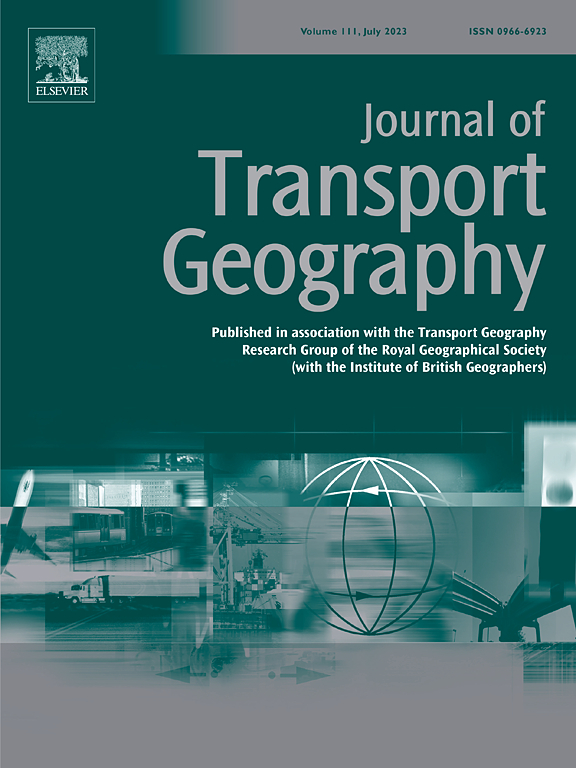BlaBlaCar 拼车的地域影响:大都市两极分化、中间城市结构化与农村服务之间的关系
IF 5.7
2区 工程技术
Q1 ECONOMICS
引用次数: 0
摘要
近几十年来,在日常通勤和长途旅行中,拼车的做法越来越多,规划和交通部门经常将其作为减少交通对运输气体排放影响的主要方法之一加以推广。然而,主要由于缺乏数据,人们对这些出行的地理分布知之甚少。一方面,供需的强度可能有利于拥有共同交通系统的城市地区。本文对法国的拼车模式进行了地理调查,并提出了一种基于从 Blablacar 平台收集的海量数据的原创方法,该平台是此类在线服务的全国领导者。在对文献进行回顾后,本文介绍了收集和分析拼车网络数据方法的主要内容。分析结果揭示了法国汽车共享的地理特征。其影响因城镇规模、地区和地区间城市系统的存在以及农村地区的旅游专业化而异。研究还强调了巴黎的独特地位和中间城镇的关键作用。本文章由计算机程序翻译,如有差异,请以英文原文为准。
The territorial impacts of BlaBlaCar carpooling: Between metropolitan polarization, intermediate cities' structuration, and rural services
Often promoted by planning and transportation authorities as one of the principal ways to reduce the impact of mobility on transportation gas emissions, carpooling practices have increased over recent decades for daily commuting as well as long-distance travel. However, mainly due to the lack of data, little is known about the geography of these trips. On the one hand, the intensity of supply and demand may favor urban areas alongside common transportation systems. On the other hand, the scarcity of public transport in rural areas or small towns can support the growth of these shared mobilities.
This article presents a geographical investigation of carpooling patterns in France and to overcome the lack of survey-data, it proposes an original method based on massive data collected from the Blablacar platform, national leader for this type of online services. After a review of the literature, the paper presents the main elements of the methodology implemented to collect and analyze the web data of carpooling. The analysis presents new findings that reveal the geographical features of car-sharing in France. The impact varies depending on the size of the towns, the presence of regional and inter-regional urban systems, and the tourism specialization of rural areas. The study also emphasizes the unique position of Paris and the pivotal role of intermediate towns.
求助全文
通过发布文献求助,成功后即可免费获取论文全文。
去求助
来源期刊

Journal of Transport Geography
Multiple-
CiteScore
11.50
自引率
11.50%
发文量
197
期刊介绍:
A major resurgence has occurred in transport geography in the wake of political and policy changes, huge transport infrastructure projects and responses to urban traffic congestion. The Journal of Transport Geography provides a central focus for developments in this rapidly expanding sub-discipline.
 求助内容:
求助内容: 应助结果提醒方式:
应助结果提醒方式:


